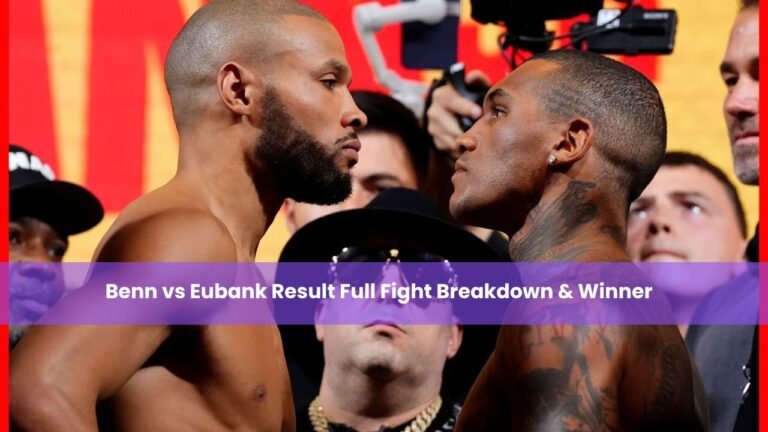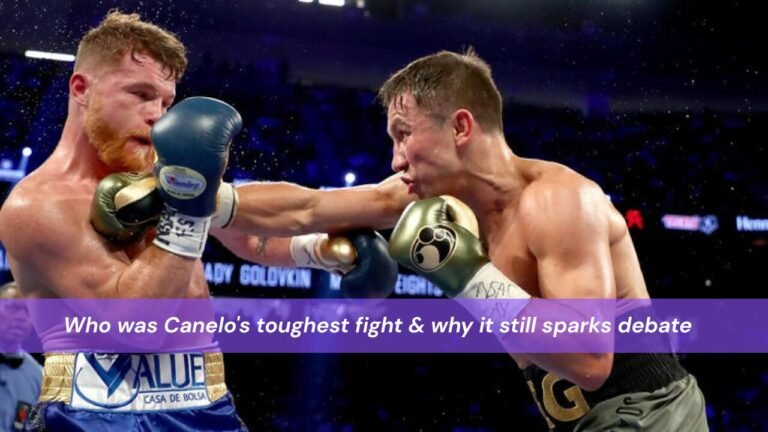Boxing is often described as “the sweet science,” but in Mexico, it has become something even greater: a cultural identity, a way of life, and a source of national pride. Mexican boxing mastery is not just about throwing punches inside the ring; it’s about grit, discipline, and a philosophy of fighting that reflects the heart of a nation. From the relentless pressure style of Julio César Chávez to the modern defensive brilliance of Canelo Álvarez, Mexico has produced legends who embody a unique combination of courage, technique, and resilience.
In this article, we’ll dive into the origins of Mexican boxing, examine the defining traits of its fighters, celebrate the champions who built its reputation, and explain why this style continues to dominate the global stage. Along the way, we’ll see how Mexican’s boxing is not only a fighting method but also a life lesson in perseverance and strength.
The Origins of Mexican Boxing Mastery
Although boxing existed in Mexico in the early 1900s, the country began to truly shape its own identity in the sport during the 1940s and 1950s. Fighters like Rodolfo “El Chango” Casanova and Rubén Olivares brought an aggressive, body-focused style that contrasted with the more defensive and evasive strategies seen elsewhere in the world. This foundation laid the groundwork for what is now considered the hallmark of Mexican boxing mastery: a balance of relentless offense and tactical brilliance.
The growth of the sport coincided with boxing becoming one of Mexico’s favorite pastimes. Crowds filled arenas to watch local heroes, and newspapers celebrated them as symbols of national strength. Over time, boxing came to embody the spirit of perseverance in the face of hardship, cementing its place in Mexican culture.
The Core Elements of Mexican Style
The Mexican boxing style is often misunderstood as reckless aggression, but in truth, it is a refined strategy built on fundamentals. Fighters from Mexico are known for their relentless pressure inside the ring. Instead of allowing opponents to dictate the pace, they close the distance quickly, cut off the ring, and force exchanges. This forward-moving style not only disrupts the rhythm of their rivals but also puts them constantly on the defensive.
Another defining characteristic of Mexican boxing mastery is body punching. Mexican fighters are masters at breaking down opponents with punishing blows to the midsection. These punches may not produce immediate knockouts, but over the course of several rounds, they sap an opponent’s energy, leaving them vulnerable in the later stages of a fight.
Counterpunching also plays a significant role. Despite their reputation for offense, many Mexican fighters are skilled at slipping punches and capitalizing on mistakes. This blend of aggression and defense creates a unique rhythm that is difficult to combat.
Perhaps the most important element is the concept of “corazón”—heart. Mexican fighters are famous for their toughness, their ability to endure punishment, and their refusal to quit even when facing adversity. This resilience has created unforgettable moments in boxing history and earned global admiration.
Finally, the high work rate of Mexican fighters sets them apart. They throw punches in bunches, overwhelming opponents with volume and consistency. This approach, when combined with conditioning and mental fortitude, makes them some of the most dangerous athletes in the sport.
Legends Who Defined Mexican Boxing Mastery
When discussing Mexican boxing mastery, it is impossible not to mention Julio César Chávez. Often hailed as the greatest Mexican boxer of all time, Chávez built his reputation on relentless pressure, devastating body punches, and iron will. His career record of 107 wins speaks for itself, but more importantly, he became a symbol of national pride, uniting fans from all walks of life.
The late 1990s and early 2000s brought another golden era with Erik Morales and Marco Antonio Barrera. Their trilogy of fights remains one of the most celebrated rivalries in boxing history. Each bout was a masterclass in endurance, strategy, and pure determination, showcasing the essence of Mexican boxing in its rawest form.
Juan Manuel Márquez also stands as a shining example of technical brilliance. Known for his counterpunching skills, Márquez’s legendary knockout victory over Manny Pacquiao solidified his legacy as one of the smartest and most adaptable fighters of his generation.
In the modern era, Saúl “Canelo” Álvarez has taken the mantle. Unlike some of his predecessors, Canelo has added defensive mastery to the traditional Mexican offensive style. With his head movement, precision counterpunching, and powerful combinations, Canelo represents the evolution of Mexican’s boxing mastery, a fusion of traditional heart and modern technique.
Why Mexico Produces So Many Champions
Mexico’s dominance in boxing is not a coincidence but the result of several cultural and social factors. Boxing is deeply ingrained in Mexican culture, much like soccer. Children grow up idolizing local champions, and boxing gyms are often found in small towns and large cities alike, making training widely accessible.
Socioeconomic factors also play a role. For many young athletes, boxing represents an opportunity to build a better life. The sport requires minimal equipment to begin, and the path to success, while grueling, is clear and achievable with dedication. This strong motivation fuels a hunger for success that translates into relentless training and performance inside the ring.
National pride further drives Mexican fighters. When they enter the ring, they are not only representing themselves but their families, communities, and country. This sense of duty adds an extra layer of determination that has become a defining feature of their style.
As a result of these factors, Mexico has consistently ranked second only to the United States in producing world boxing champions. This legacy continues to grow with each new generation of fighters.
Mexican Boxing Mastery vs. Other Styles
To truly appreciate the uniqueness of the Mexican approach, it helps to compare it with other boxing styles. The American style often emphasizes athleticism, speed, and defensive maneuvers, producing fighters who rely heavily on footwork and movement. The Cuban style, on the other hand, is known for its technical precision, impeccable defense, and a philosophy of hitting without being hit.
In contrast, the Mexican style thrives on pressure and close-range combat. Rather than circling and evading, Mexican fighters embrace toe-to-toe exchanges. Their willingness to take risks and engage directly creates fights that are both thrilling for fans and punishing for opponents. This bold approach is why Mexican fighters are often involved in some of the most memorable bouts in boxing history.
Modern Training for Mexican Boxing Mastery
For fighters aspiring to adopt this style, training must go beyond physical fitness it requires mental toughness and discipline. Heavy bag drills are essential, particularly those focused on body punching and combination work. These drills replicate the relentless style of attack Mexican fighters are known for.
Sparring under pressure is equally important. By practicing in scenarios where space is limited and opponents push forward, fighters learn to adapt and remain effective even in close quarters. This preparation ensures they are comfortable when the fight becomes intense.
Conditioning plays a central role as well. Since the Mexican style relies on a high punch output, fighters must build exceptional stamina through endurance training. Running, interval workouts, and long sparring sessions help develop the energy needed to sustain pressure across all rounds.
Mental resilience cannot be overlooked. The ability to withstand punishment and maintain composure under fire is what separates average fighters from those who embody Mexican boxing mastery. Training often includes psychological preparation to strengthen this toughness.
Real-World Example
Canelo Álvarez serves as a prime example of how Mexican boxing has evolved while staying true to its roots. Early in his career, Canelo was known for his aggressive combinations and body shots. However, as he faced tougher competition, he recognized the need to improve defensively.
Over time, he developed excellent head movement, refined his counterpunching, and learned to control fights with patience. Today, he embodies a modernized version of Mexican boxing, still aggressive when needed but also highly strategic. His success demonstrates how the principles of Mexican boxing mastery can adapt to different eras without losing their essence.
The Global Influence of Mexican Boxing
The influence of Mexican boxing extends far beyond the country’s borders. Fighters around the world study and incorporate its techniques, particularly the emphasis on body punching and inside fighting. Even champions from outside Mexico, such as Gennady Golovkin, have openly credited the Mexican style as a major influence on their careers.
Gyms in the United States, Europe, and Asia now include training methods inspired by Mexican boxing, showing how this philosophy has become a global standard for toughness and effectiveness. This cross-cultural adoption highlights the universal respect for the style and its proven track record of success.
FAQs
What makes Mexican boxing different from other styles?
Mexican boxing focuses on relentless pressure, inside fighting, and body punching, while other styles often prioritize movement and defense.
Why do Mexican fighters emphasize body punches?
Body punches weaken opponents over time, draining their stamina and leaving them vulnerable in later rounds. It’s a central strategy in Mexican boxing.
Who is considered the greatest Mexican boxer of all time?
Julio César Chávez is often regarded as the greatest, though fighters like Canelo Álvarez are building legacies that may one day rival him.
Can someone outside Mexico learn this style?
Yes. While rooted in Mexican culture, the techniques of Mexican boxing mastery can be learned by anyone willing to train with discipline and commitment.
Is Mexican boxing reckless?
Despite its aggressive reputation, Mexican boxing is highly strategic. The pressure is calculated, and fighters rely on fundamentals as much as toughness.
Conclusion
In the end, Mexican boxing mastery is more than just a fighting style it is a philosophy that reflects resilience, courage, and national pride. Its combination of relentless pressure, body punching, and mental toughness has produced some of the greatest fighters in history and continues to shape the future of the sport.
For aspiring boxers, studying the Mexican style offers not just technical lessons but also life lessons: keep moving forward, endure challenges, and fight with corazón. Whether in the ring or in everyday struggles, this spirit of persistence is what makes Mexican boxing not only effective but truly legendary.




